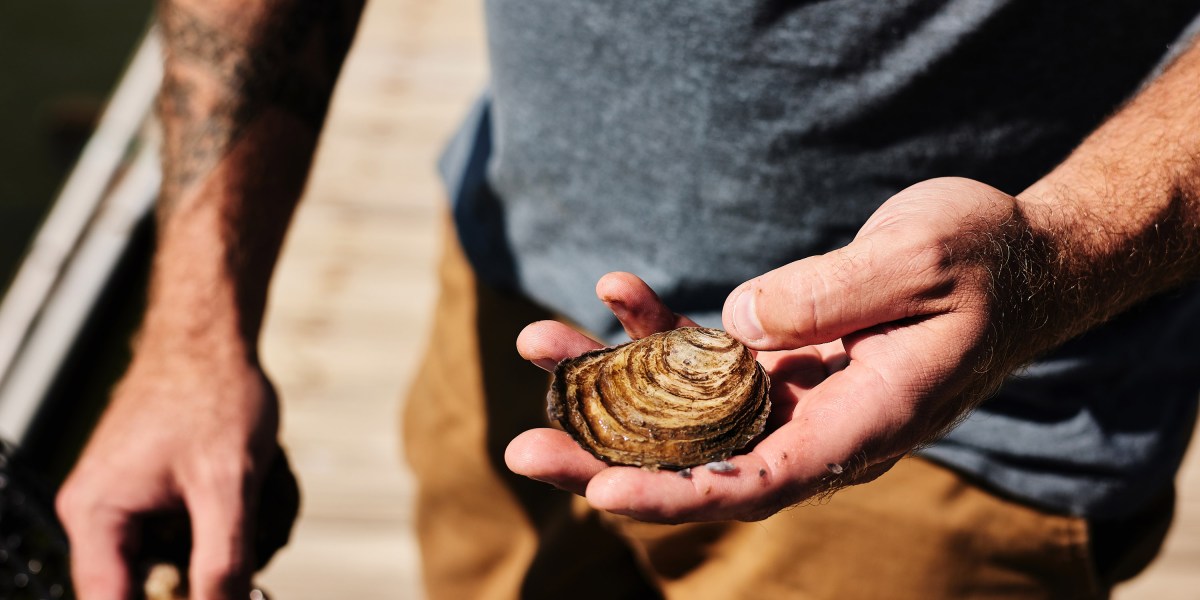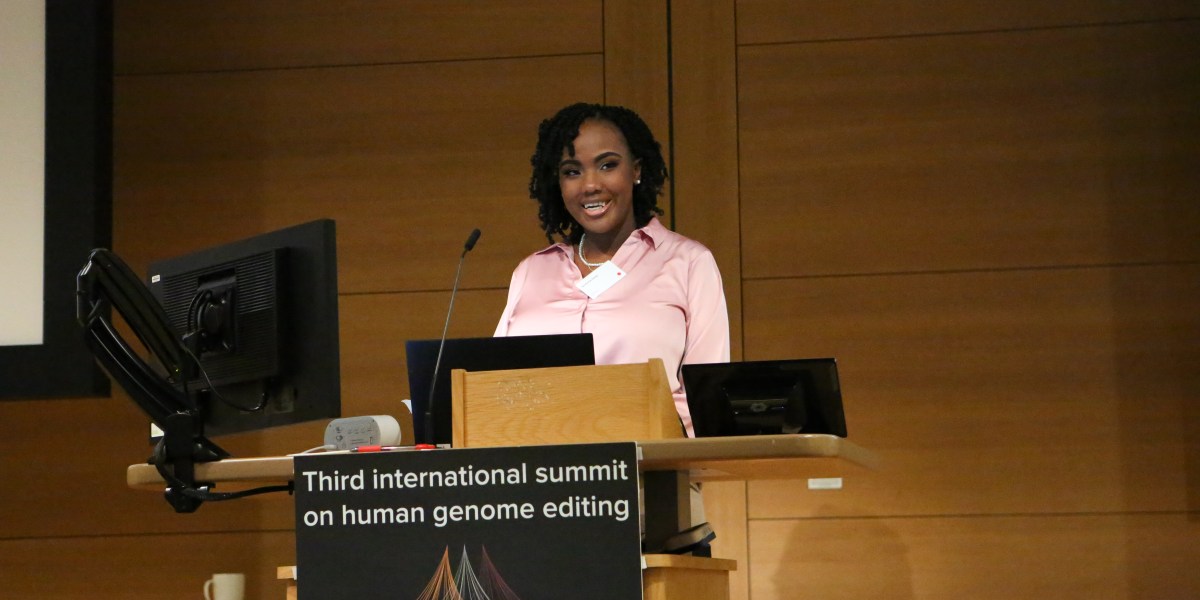Oyster fight: The humble sea creature could hold the key to restoring coastal waters. Developers hate it.
In the summers of the early 1970s, in the days before developers launched bidding wars over waterfront real estate, before the Delaware beaches drew long lines of tourists and traffic, the children living on Lewes Beach would perch in the windows overlooking the shore and scream out when the water started to roil, shimmer, and splash.
Carol Friend—seven or eight or nine at the time—would run with her 10 older siblings down to the sand, clutching fishing poles and nets, and throw them into the water. The lines would come out jerking and glittering, straining under the weight of bluefish gasping for air. If the water splashed too violently—indicating a possible shark in a gluttonous frenzy—the children would remain on the sand. On other days, they would shove their bodies into the ocean, amid the schools; sometimes puffer fish would drift so close that they could become air-filled balloons for the children to bounce and toss and catch across the beach.
The water was always clear to the bottom. The schools passing close to shore were part of the summer routine.
Not anymore.
Friend’s family eventually moved off the beach. She still spent time on the water, but she also had a life to live. While many of her brothers pursued futures as watermen—some fishing, some clamming—she would spend a 35-year career working for the United States Postal Service. Over the course of those same 35 years, the abundant schools of fish in this part of Delaware would shrink, drift farther from the coastline, and eventually become just a memory. The shoreline water appeared to thicken and grew almost opaque. According to a 2016 report, eel grasses virtually disappeared in the 1970s and never recovered. Blue-crab catches declined by about 50% from the mid-1990s to 2015, and catches of bay anchovy—important for bait and as food for larger fish—declined by about 40% over the same period.
“I don’t see any of the life down there that used to be there as a kid in the ’70s,” Friend, now 61 and retired from the post office, told MIT Technology Review.
In her retirement, Friend has taken on a difficult job. She is one of the 10 people in Delaware currently trying to make it as a cultivated oyster farmer. Her Salty Witch Oyster Company holds a lease to grow the gooey mollusks as part of the state’s new program for aquaculture (first launched in 2017), which has sputtered despite its obvious promise.
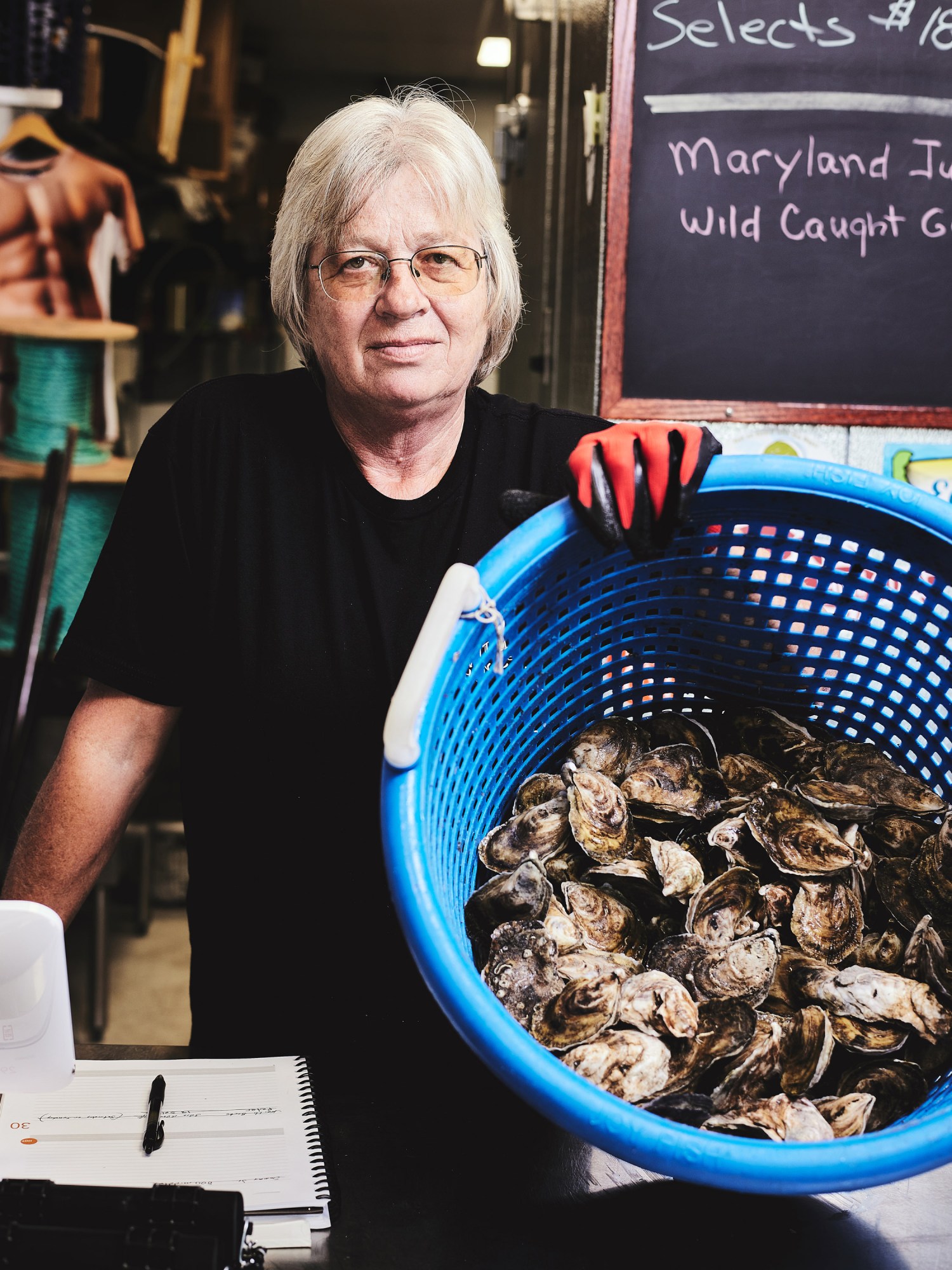
The story of oyster aquaculture in the Delaware Inland Bays—about 32 square miles of water draining into the Atlantic Ocean that make up a 320-square-mile watershed—is an object lesson for the rest of the world.
Introducing aquaculture where none exists can simultaneously clean heavily polluted waters and provide local economic opportunity. It’s a rare instance of a straightforward environmental solution that can also provide financial opportunity for the people most affected by the problem in the first place. Aquaculture involves oyster farming in cages for commercial purposes. Farmed oysters in Delaware are particularly salty, a quality prized by connoisseurs of raw oysters on the half shell. The area’s restaurants, mostly seafood spots thriving on tourism along the Delaware beaches, are ready-made customers eager for a local product to sell.
The state even has a shining example to emulate. Just south of the Delaware Inland Bays sits the Chesapeake, the greatest success story in the United States for oyster aquaculture and restoration as a combined environmental and economic boon. The Chesapeake is the largest estuary in the United States, and it was once home to some of the most overharvested and polluted waters in the world. Thousands of acres of Chesapeake tributaries have been reseeded with wild oysters, and farmed oysters have become at least a $30 million industry for Virginia and Maryland.
Early research on Harris Creek—one of the Chesapeake tributaries—suggested that even modest oyster populations there could remove about 20,000 pounds of nitrogen (one of the main pollutants in US coastal estuaries) per year—if not more. The density of juvenile crabs, small and larger fish species, and invertebrates that serve as fish food all increased around restored oyster reefs, early signs of wildlife diversity in the Chesapeake similar to what Friend remembers from her childhood in the nearby Inland Bays.
“We’ve put over 2 billion oysters in Harris Creek alone, restored 350 acres, and we’ve seen improvements in water quality and clarity. We see all of the habitat being colonized. The oysters are acting as the parent group for that river system, and we’ve seen reductions in nitrogen,” says Stephanie Alexander, the manager of the Horn Point Laboratory Oyster Hatchery in Maryland.
“All in all, it’s been a fantastic project,” Alexander adds.
But while the Chesapeake serves as a symbol of hope for the world, Delaware oyster farmers have learned that their neighbor’s size and importance as a national landmark make its story difficult to replicate.
Oysters, which anchor ecosystems in brackish waters across the globe, have been historically integral to the economies of many states, including Rhode Island, Alabama, Washington, and Maine. Oyster aquaculture and restoration programs are underway on the coasts of Virginia, Maryland, North Carolina, Alabama, the Gulf of Mexico, Cape Cod, and the New York Harbor, among many others, in an effort to address wildlife loss, coastal erosion, and pollution while bolstering local business.
In Delaware, oyster aquaculture has been plagued by early struggles despite its obvious advantages. The Delaware Inland Bays are similar to most other polluted waterways in the US: biologically diverse, regionally important protectants against severe storms and coastal erosion, but generally neglected. They are cleaned—or polluted—at the whims of their state and local governments. Farmers and researchers blame the state for creating regulations that make the initial investment prohibitive to the oyster-curious. Waterfront owners and property developers object to oyster buoys and cages in the water, attacking them as a blight on recreation and views. Developer and tourist demand for waterfront property has driven up the prices for the commercial land that oyster farmers need to affordably process their hauls.
Five years after the first farmed oysters went into the Inland Bays, the aquaculture industry remains in a larval stage. Only about 7% of the water available for farming there is currently under lease. The number of farmers has actually declined since the program launched.
The person who best understands the nascent aquaculture industry is a professor at the University of Delaware. Edward Hale, a marine biologist, could not be further from the stereotypical researcher with tenure. In his late 30s, Hale is chatty, tanned like the much older watermen he works with, and eager to discuss the practical applications of his research. He is the poster boy for the program, mentioned in every conversation as the expert and advocate. He talks regularly to every oyster grower in the state.
“As far as I’m concerned, oyster aquaculture is the solution to our historic problem,” Hale says. “But oysters can’t be your only piece of the puzzle.”
Oysters themselves are almost mythical in their ability to clean and filter water. But human willpower, investment, and flexibility (on individual, commercial, and state levels) are all required to allow the oysters to simply do their thing.
“Oysters are very political. At the heart of it, the oyster is just happily filtering and doing their little job,” Alexander says. “If you can get to the point where you can put aside tension and egos and just really ask: Do you want better water quality? If you get more oysters overboard, they are going to clean the water. You are going to have more farms; you are going to have more money going to the government. It can snowball very quickly into good things.”
For the last hundred or so years, fertilizer, wastewater, and other pollutants have been leaking from the land and the groundwater into the bays. This is true not just for Delaware, but all along the coasts. The ocean life that Friend remembers from her childhood—a collection of diverse ecosystems that protected the mid-Atlantic shoreline and provided abundant seafood for human consumption—has disappeared largely because of overabundant nutrients.
Once they enter the bays, those nutrients—primarily nitrogen and phosphorus—become excess food for algae, bacteria, and other small living organisms, which gorge themselves (just as cultivated crops do on land), reproduce into massive blooms that cover the water, and then promptly die, decomposing into detritus that releases carbon dioxide, blocks light penetration, makes the water more acidic, and suffocates the organisms that sustain the Inland Bays ecosystems.
This process is called eutrophication, and the National Oceanic and Atmospheric Organization says that 65% of the estuaries and coastlines in the United States have been degraded in this way. Globally, the United Nations estimates, the “number of dead zones worldwide—areas of water that lack sufficient oxygen to support marine life—increased from around 400 in 2008 to approximately 700 in 2019.”
Even if fertilizer and wastewater runoff could be eliminated, all the nutrients, pollutants, and dead matter from the previous decades still lurk in the waters along coastlines. Filtering out all those contaminants is an impossible challenge for human engineering.
But there is one living thing that can purify water at large scales, just by existing. That organism is the oyster. If allowed to flourish, the oyster could help restore the Inland Bays and Delaware beaches, and coastal waterways throughout the country, to their clear, life-filled glory, all while sustaining a local aquaculture economy.
Eastern oysters filter an estimated 50 gallons of water per day apiece, though that number may be lower depending on ocean temperatures, cleanliness, salinity, and an oyster’s specific location in the water, according to Hale. They also use nitrogen and phosphorus found in phytoplankton to grow their shells, permanently removing those nutrients from the water. They filter the dead matter that blocks light penetration and lowers oxygen levels in the water.
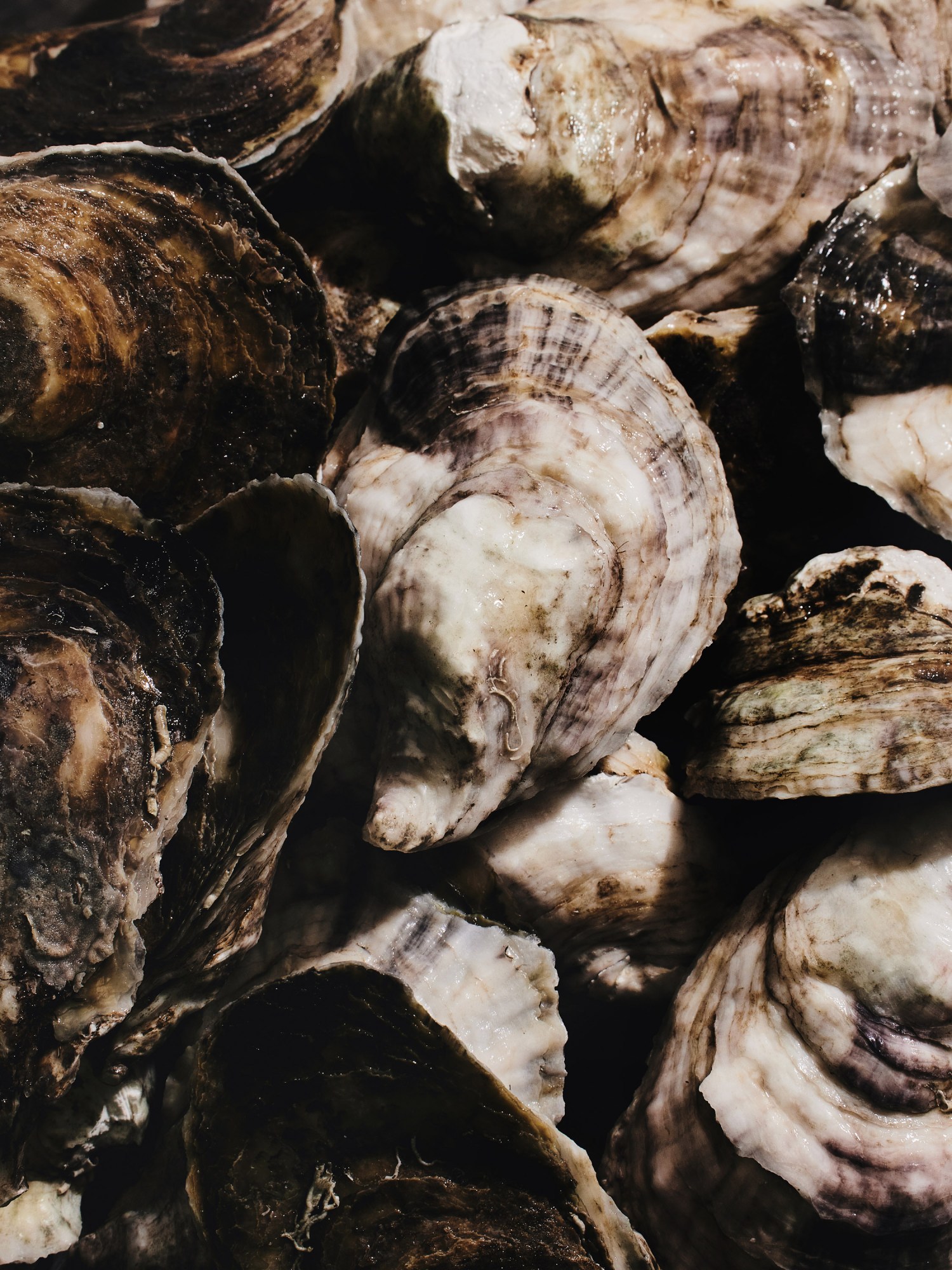
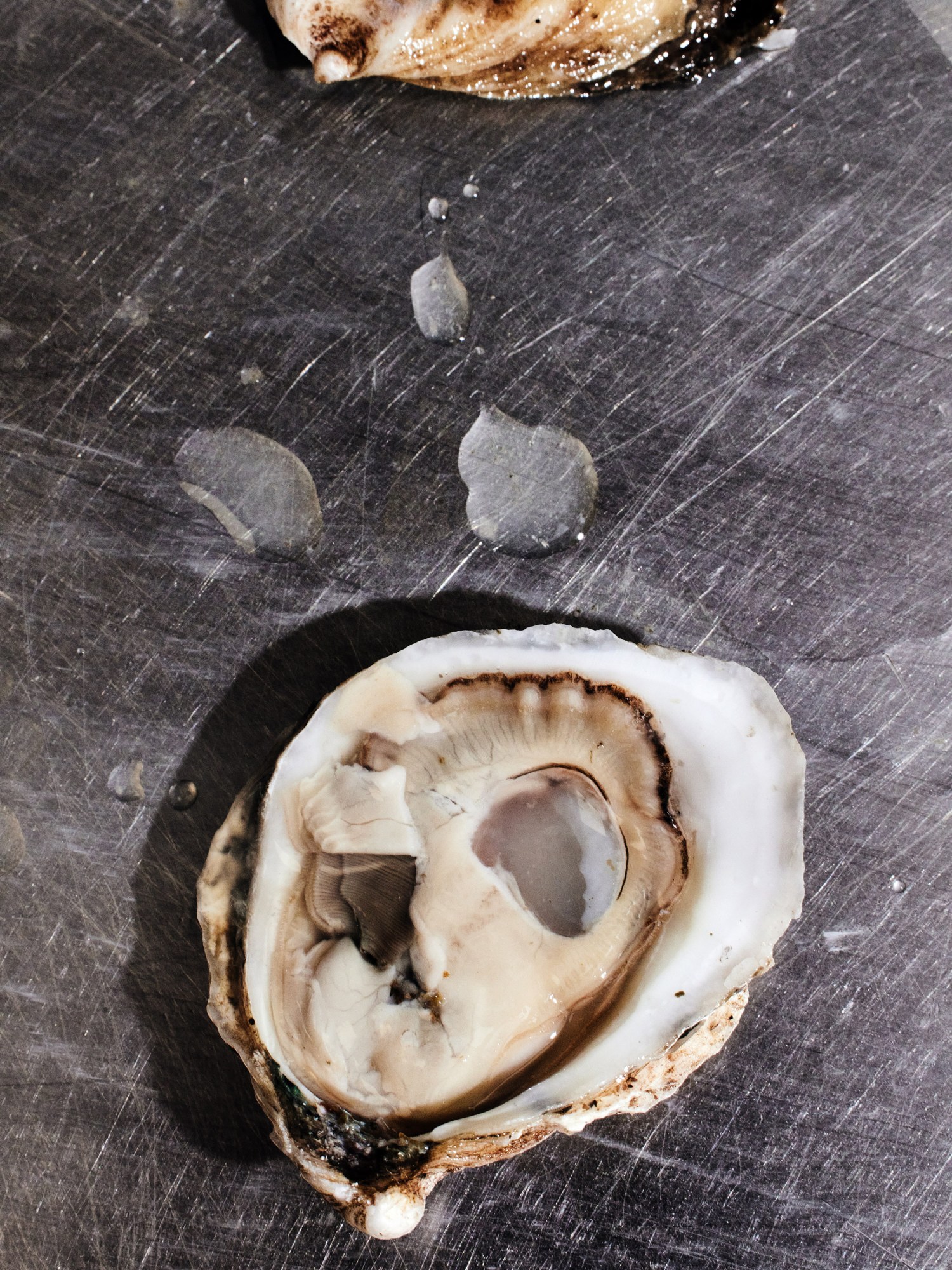
Cultivated oysters purify the water in the local bays before they are harvested to be eaten.
Oyster reefs, which are clusters of wild oysters that grow on top of and around each other, can protect shorelines from coastal erosion, acting as a living natural barrier. Both reefs and farmed oysters, which are grown in cages instead of on reefs, attract small organisms that make up the basis of many aquatic ecosystems. Those shellfish and other invertebrates become food for larger fish and crustaceans, which consequently gravitate toward the oysters as well. The oysters become the keystone species for a thriving ecosystem. Then the farmed oysters, once harvested, exit the water with the nutrient pollution safely stored in their shells. While some of those shells will end up in landfills, many restaurants participate in recycling programs that dry them and turn them into a hard surface to build more reefs, so they go back into the water as a home for wild oysters.
“When you look at a really pragmatic view of humanity’s intercession into the environment, it’s generally not positive. But when you look at this instance, there’s these actual ecosystem services that these artificial oyster habitats are rendering,” Hale says.
So where are all the oysters? If they are so powerful at cleaning the water, why is eutrophication a problem in the first place? This answer is sometimes site-specific—hurricane damage and too little salt in the water in Alabama, for example—but for most places, including the Inland Bays, the answer is mostly human overconsumption.
“Harvested oysters were foundational to our early colonial development in the US. And so it’s been this period of overharvest and overextraction,” Hale says. “At one point, they were pulling 2 million bushels per year out of the Delaware Bay alone to feed city communities in Philadelphia, Wilmington, and New York. They had oyster carts the same way we have hot dog carts.” While Indigenous groups relied on oysters as well, the colonists treated the ocean like an all-you-can-eat buffet, decimating wild oyster populations and leaving them vulnerable to diseases. They became too weak to survive in the eutrophying water.
By 1979 in Delaware, overharvest and parasites had almost wiped out the population. The reefs had been dredged so thoroughly they could no longer sustain themselves. The state, also facing conflict between clammers and the oyster industry, simply banned oyster harvest—and aquaculture—in the Bays. And for the next 30 years, the industry was dead.
In Sussex county, the largest county in one of the smallest US states, farm life flourished as the ocean life on its edges disappeared. Fields of corn and soy sprouted thick across its nearly 2,000 square miles. Today, cornstalks still stretch to the horizon along long stretches of the roads that wind to the beaches.
Though the county was home to a whaling colony in the 17th century, its biggest claim to fame today is its status as the birthplace of the modern broiler chicken industry, launched in the 1920s. As chicken demand grew over the course of the 20th century, so did the need for corn and soy to feed the poultry. The feed had to be cheap, which encouraged steady application of new synthetic fertilizers containing nitrogen and phosphorus, as well as new insecticides and fungicides. Yields for chicken farmers increased accordingly. In 2022, almost exactly one century after the modern poultry industry’s inception, Delaware farmers raised 596 million chickens. The manure from all those chickens also contained more of those problem nutrients.
It was not until the 1990s that the state introduced pollution control plans to address runoff of nutrients, including the nitrogen and phosphorus in the fertilizer and manure. Limits were set on the amounts that should make it into the groundwater and into the bays. Those limits prevented the problem from steadily worsening, but they could not remove what was already present.
“One of the largest improvements was the passage of the nutrient management law,” says Ed Lewandowski, the former executive director of the state-mandated watershed nonprofit Center for the Inland Bays (CIB). “It did a better job of controlling the amount of manure applied to fields in Sussex county, and it’s been seen as a way of managing the poultry manure. It has led to significant changes and improvements.” The CIB was established by the state to oversee the conservation plan for the bays in the mid-1990s.
Because oysters have such exceptional water-cleaning abilities, one of the first projects the CIB spearheaded after its launch was research to explore whether they could still survive in the eutrophied Inland Bays. Their researchers found that the oysters not only survived—they thrived.
So the CIB then launched an oyster gardening program in 2002. Over the next decade, hundreds of locals were able to show that baby oysters could survive and grow in baskets thrown off the waterfront docks. The program was stupendously successful. Delaware residents saw that oysters cleaned the water and attracted coastal wildlife.
An oyster heritage, once lost, began to return to the community.
Oyster gardening remains popular today; in a recent visit to an oyster garden off a dock in Rehoboth, I saw blue crabs and larger fish circling the boxes as they were pulled out of the water. Fishing my hands into the watery muck that coated the oyster shells, I pulled them up to find my fingers coated in slime that held tiny moving creatures—baby crabs, nearly invisible fish, and bug-size shrimp that had surrounded the oysters in their cages.
“Over time, people started to ask the question: Is this something that can be done commercially? We were one of the few coastal states at the time that did not permit commercial aquaculture growth,” Lewandowski says. “So in 2010, we started asking the question formally.”
It wasn’t hard to persuade the state to legalize aquaculture. By 2013, a bill had been signed into law. The oyster movement was going swimmingly.
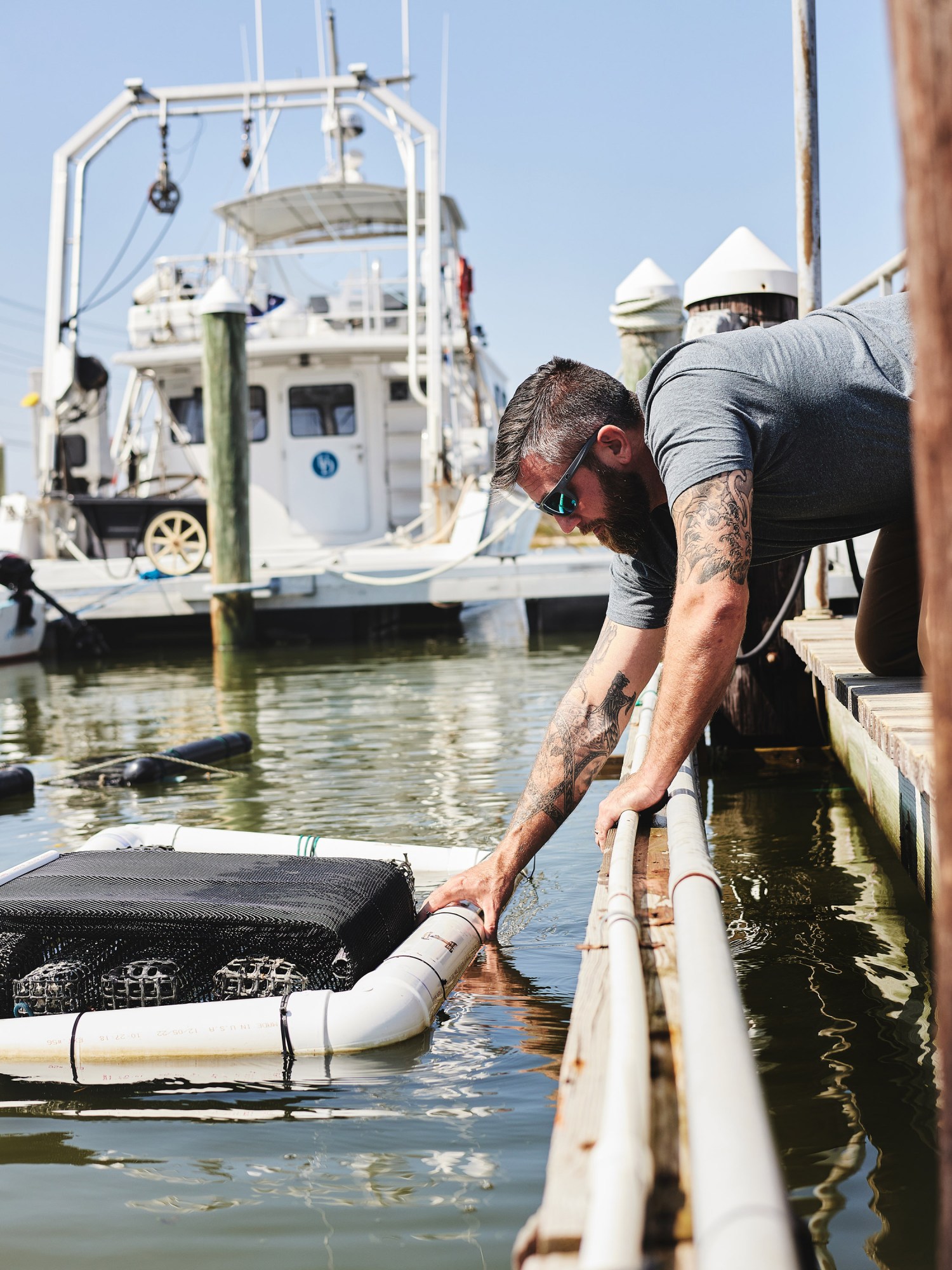
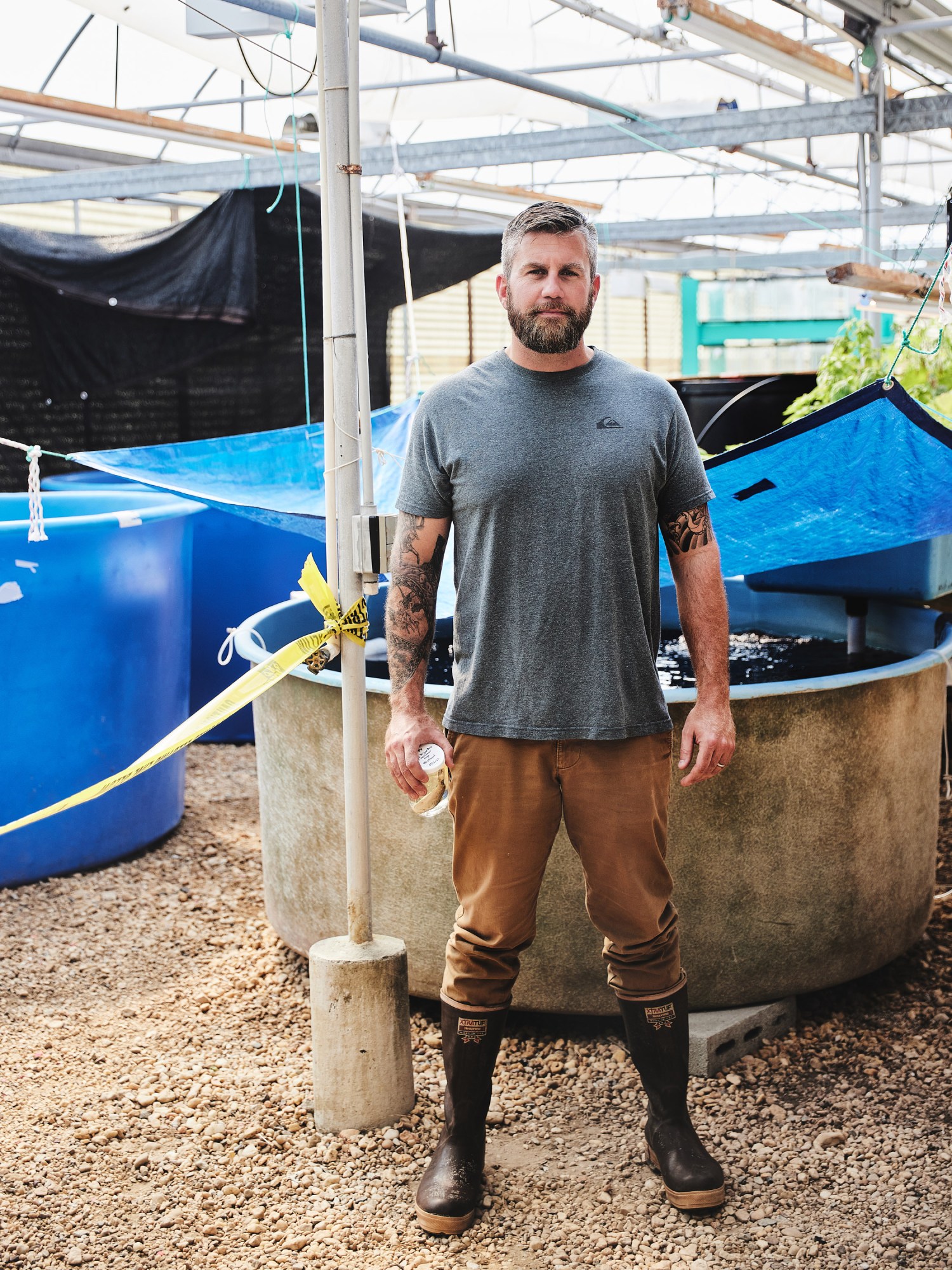
Ed Hale studies oysters’ impact on the local ecology as part of his research at the University of Delaware. He checks on baskets of oysters floating in the bay (left) and advocated for the oyster hatchery that provides larvae and seed to local growers.
And then, between 2013 and 2017, the plans for an oyster industry ground to a halt. Part of the problem was regulatory. The Delaware Department of Natural Resources and Environmental Control (called DNREC by locals) had to establish rules for leasing, permitting, and management. The other part of the problem was completely unexpected: a NIMBY pushback from landowners and people who use the bays for recreation. Some locals didn’t want white buoys and oyster cages disrupting their view of the horizon, or leases interfering with their ability to use the water for boating, kayaking, and other aquatic fun. Eight homeowner associations hired legal counsel to fight the proposed leases.
“Commercial aquaculture is inherently incompatible with prior recreational uses,” wrote Steve Plotkin, a Delaware resident, in one of hundreds of letters of protest sent to the Army Corps of Engineers during a 30-day public comment period on the proposed aquaculture program in 2015.
“People didn’t want to look out their back window and see any oyster industry activity. From what I understand, it got pretty ugly,” says Anna Fagan, the current deputy director of CIB.
By the time leases were finally open for applications in 2017, around 80 people had expressed interest in trying to farm oysters, according to Hale. But the new lease requirements surprised and frustrated most of the potential oyster farmers, including Mark Casey, a retired DuPont engineer who has shoveled some of his generous retirement savings into oyster farming and aquaculture advocacy and education. Casey is the go-to oyster farmer in Delaware, an outspoken advocate whom other farmers recommended I speak with.
Casey will say what other cultivators are too afraid to acknowledge publicly for fear of retribution from the state regulatory agency: the state’s rules are burdensome for oyster farmers and create a high barrier to entry into the industry.
“The reality is that most guys who commercial fish don’t want to do the steps they require. The ramp-up of the startup can be prohibitively expensive,” Casey says. “Part of the problem is that DNREC is designed to keep people from hurting the environment, rather than helping the environment.”
Of the more than 80 people that had expressed interest in farming, now only 10 hold leases.
Zina Hense, the program manager for the Delaware Inland Bays Shellfish Aquaculture Program, wrote in an email to MIT Technology Review that the regulations were designed to create and protect an aquaculture industry in the long term.
That industry-focused design created three primary barriers contributing to the gasping start, according to Casey, Friend, Hale, Lewandowski, and other farmers.
The first is the initial capital outlay required for the business. The new rules laid out by DNREC require that the farmers plant at least 100,000 oysters per year per acre after two years of leasing, a number so large that anyone interested in experimenting with oyster farms or farming recreationally is excluded from eligibility, according to the farmers. Casey estimates that the cost of the equipment for that type of operation, from cages to boats, could total anywhere from $50,000 to $100,000.
“The words ‘hobby farming’ just set the regulators off the deep end,” Casey says.
In an email in response to questions about why the state limits hobby farming, Hense wrote, “Allowing recreational or very small producers in Delaware’s Inland Bays would not be good for the industry as a whole. The footprint of shellfish aquaculture and exclusion of other uses/users would be extended without a significant amount of oysters grown, and there would be a larger possibility for the leases to be used as exclusionary or speculative leases. Minimum planting and harvest requirements help ensure that space leased and set aside for shellfish aquaculture is being used for shellfish aquaculture.”
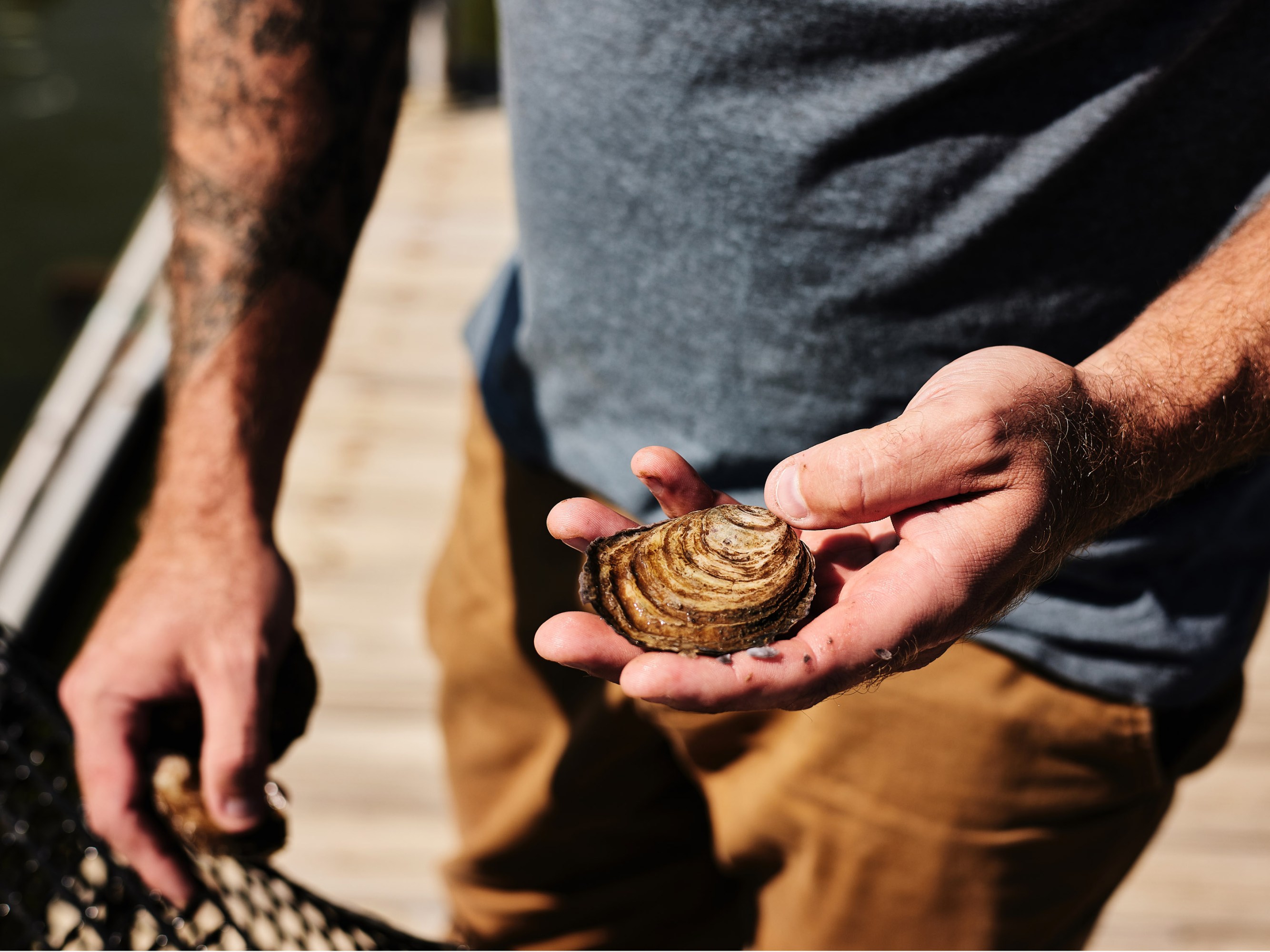
In part because of the requirements, only a few of the oyster farmers actually make a profit. Many of those with leases today see the financial investment as a personal price willingly paid to restore the bays. Oysters continue to eat Casey’s retirement fund, and he has no concrete plans to change that, to the chagrin of both his investment advisor and his wife. Dan Fosnocht, Friend’s business partner and the co-owner of Rehoboth Bay Oyster Company, isn’t sure if his company has turned a profit after its three years, either.
“I grew up in southern Delaware. I took sailing lessons at the Lewes Yacht Club. I crab to this day in Rehoboth Bay. A lot of it is to help give back to the area that has given me so much over time,” Forschnoct says. “I like to see that you’re cleaning up the water. When you’re walking around in your one acre with all those oysters and the water is clear, it’s proof that it works.”
The second problem hits farmers once their oysters are living in the water. The physical task can be overwhelming. Young hired laborers will often do one or two days on the oyster farm and then ditch the industry for restaurant work or other service jobs, according to Casey.
But the most prohibitive problem is the expense of dock-front land. Because the industry was dead for so long, the value of waterfront property skyrocketed as tourism and pleasure boating took the place of commercial activities. Now, there are few affordable spaces for farmers to process their hauls. Some park their boats in recreational marinas, but they must endure the ire of tourists who don’t like the smell and grime, and they face the constant threat that the marinas will kick them out as a result.
“If you could persuade some wealthy landowner to donate space for a commercial dock for us, you have no idea how much of a difference that would make,” Friend says.
Hense, the Delaware Inland Bays program manager, said that farmers are not required to state why they terminate their leases. “The Inland Bays shellfish aquaculture leasing was a new option for prospective lessees in Delaware and those who leased in the first few years were pioneers for the industry here. The initial lessees did not have previous experience intensively growing oysters. There’s been a learning curve with shellfish aquaculture,” she wrote.
“It’s hard. And it’s expensive,” Hale acknowledges. “But when you look at Rhode Island, a state of comparable leasing size—they’ve created at least 222 jobs. Close to $7 million in oysters sold. That’s a huge difference to what we’re doing. We have only $450,000 in oysters sold.” For Hale, that gap is all opportunity.
On the day Friend spoke with me, she delayed our call by several hours because she was meeting with one of the state’s US senators, Tom Carper. Carper, who chairs the Senate Committee on Environment and Public Works, has met Friend on several occasions—he even toured her oyster farm—and this latest meeting was part of a roundtable between him and the aquaculture community. He could hold the key for the type of federal funds and attention that benefited the Chesapeake Bay’s restoration project.
Hale has a vision for bulking up the feeble industry, and Carper and his federal clout represent just one piece of the puzzle. From his office just off the beach in Delaware, Hale quickly lists so many theories, grant applications, and proposals that I cannot keep up in my notes. I finally give up and just listen to capture the vast scope of it all.
For those people who can’t break into the oyster industry because of the ban on hobby farming, apprenticeships and training programs could build their experience, capital, and curiosity. To tackle educational barriers, a university research lease—with plans already well underway—will give Hale and others at the University of Delaware the chance to show prospective farmers and reporters like me a functioning oyster farm on an experimental, rather than industrial, scale. And because oyster growers currently have to buy their oyster seeds from other states, sometimes paying a premium for the privilege and fighting for the last of the seeds in bad hatching years, the professor has even spearheaded an in-state pilot oyster hatchery. (Baby oysters have already arrived this year, well head of schedule.)
On clear winter days, too cold for recreational boaters, Fosnocht (Friend’s business partner) will boat out to the oyster cages and marvel at the life that surrounds them in the water. In the summers, Friend finds the iconic blue crabs in every cage she pulls up, from adult males to babies the size of a finger. Occasionally, when Friend or Fosnocht pull oysters out of the ocean, they will even find one of the most elusive and mysterious ocean creatures—a seahorse—dangling contendly beside them.
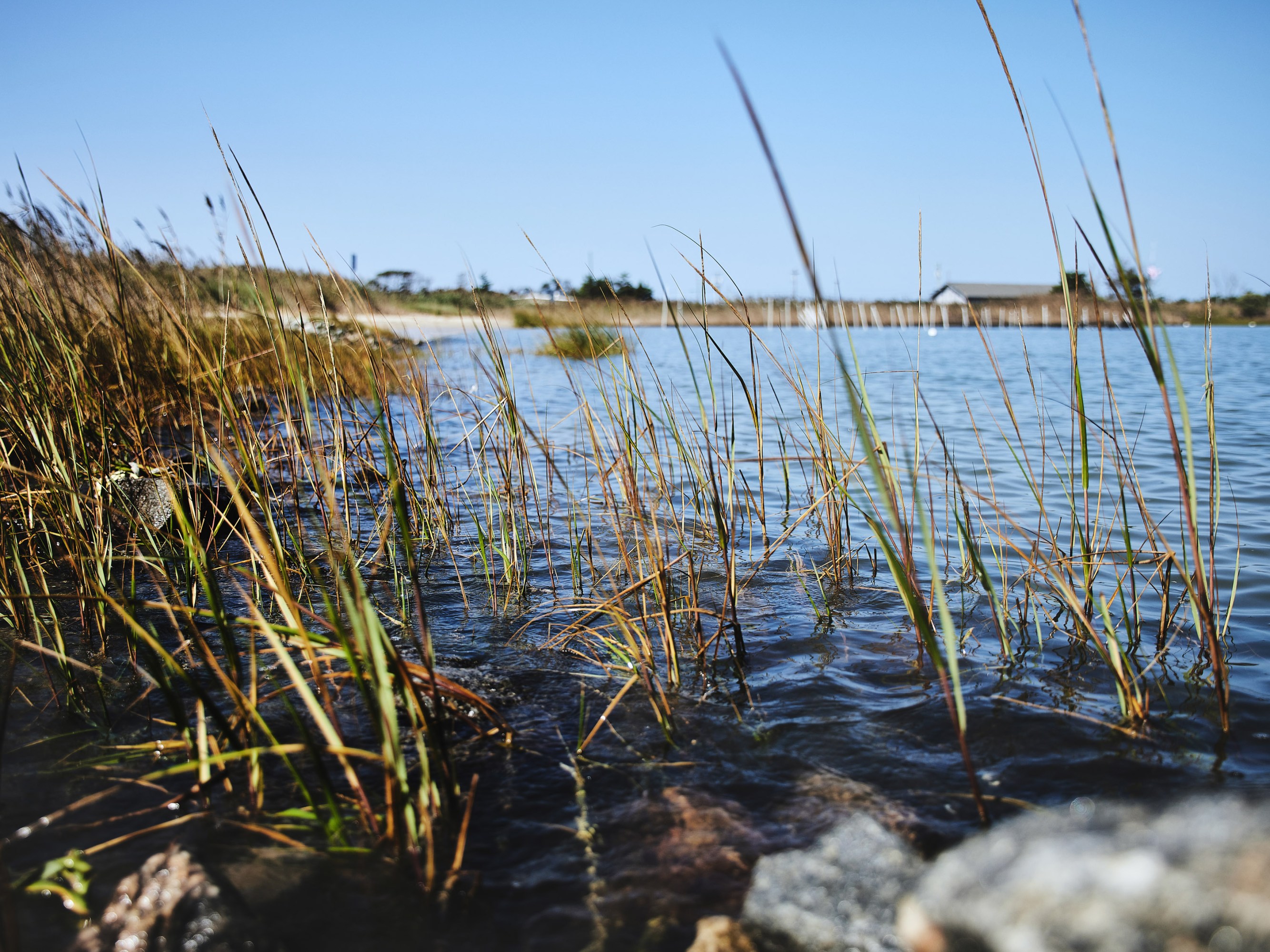
To really kick-start the industry, farmers could be paid for creating that sort of natural wonder. This idea is not far-fetched. A pilot program along those lines already exists in Maryland, where the state offers a market for nutrients removed from the water and allows oyster farmers in the Chesapeake to earn nutrient credits based on the size of the oyster shells. The farmers can sell the credits, which gives them a financial reward for producing a product that also does double duty as a pollution-removal tool.
“It’s such an abstract thing, but nitrogen and phosphorus are the big killers in the bay, and so if you have a system that just naturally removes it by just being there and filtering it, that’s a net gain for the bay,” Alexander says. “So there should be some monetary assistance, because your crop is helping to reduce nitrogen.”
Casey envisions an ideal oyster economy as one where farmers are paid for the environmental work of helping to restore wild oysters, which in turn would give them enough capital to invest in aquaculture for the commercial ones. While he doesn’t have experience with Maryland’s nutrient trading program, paying farmers in general for restoration efforts would help fund the initial investment required for aquaculture. “If you could do reef oysters to pay your costs with restoration work, oyster farmers would have a clever pathway to financial success,” he says.
Hale sees the situation similarly. “I think we’re gonna get there. There are way more complicated problems that we’re solving every day,” he says. “It’s just putting energy toward it. And being willing to take risks.”

